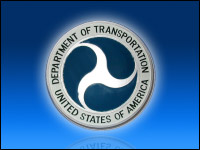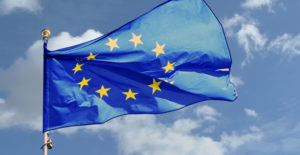
The need to improve marketing in the airline industry has never been more apparent. Airlines in the U.S. reported a 6 percent drop in traffic in 2009 versus 2008, while passenger revenue declined by 18 percent. Globally, international scheduled air traffic declined by 3.5 percent in 2009 versus 2008 — the largest ever post-war decline.
Airlines appear willing to invest in technologies designed to improve the customer experience.
Although airline IT budgets will be tight in 2010 — at just 1.7 percent of revenue, the lowest level since 2002, according to SITA — customer-related initiatives are high on the list of forecasted IT investments.
Using IT for “enhancing market opportunities” was either a very high, or high priority for 74 percent of airline respondents to a 2009 survey jointly sponsored by SITA and Airline Business.
IT investments designed to “improve customer service” ranked either very high or high among 82 percent of respondents, SITA reported.
One indication of the focus on consumer-based IT is the online sale of 600 million tickets per year. “This will reach a billion tickets in three years,” Francesco Violante, CEO of SITA, told CRM Buyer. “Also, today we have 15 percent of passengers using Web check-in. This will double in three years.”
Airlines plan to improve their Web sites to facilitate ticket changing, cancellations, rebooking, alternative payment options, frequent flyer redemptions, and online shopping, according to SITA. Nearly 300 million passengers now use self-service kiosks for check-in each year. By 2012, that will reach 500 million.
“It will be a digital future where Web and wireless technologies converge to provide an anytime, anywhere environment for airline customers,” Violante said.
FFPs Provide a Base for CRM
Virtually all large air carriers have comprehensive “loyalty” or frequent flyer programs (FFPs), and the IT structure to support them. However, moving beyond customer convenience measures and improved loyalty programs to full-scale CRM activities appears to be a tougher hurdle for the airline industry.
Although the existence of FFPs “leads to very robust systems in support of loyalty programs throughout the industry, airlines need to take the next step and evolve their FFPs to CRM programs,” Len Lubbe, CEO of LoyaltyPlus, told CRM Buyer.
To utilize FFPs as the foundation for CRM programs, “there are tasks such as customer analytics and segmentation that the typical FFP system needs to more fully leverage and implement,” Heidi Lamberts, a partner at Infosys Consulting, told CRM Buyer.
“The data and functions of CRM and FFP systems need to meld more seamlessly into one another to deliver the next level of value to airlines,” she said, “and IT services firms can enable that.”
In-depth analysis of customer travel patterns and consumer behavior data can yield information leading to more sophisticated and individualized marketing contacts with customers as part of a CRM program.
Airlines Take Control of Customers
The development of loyalty programs has been a game changer in relationships between airlines and their customers — and a critical factor in facilitating airline-controlled CRM.
“Back when FFPs began, travel agencies were the main distribution channel for airlines, representing 85 percent of all traffic, and they owned the relationship with the customer,” said Lamberts. “Now, FFPs enable airlines to know their customers and to communicate and incentivize them directly. When combined with advances such as Web technology and electronic tickets, the airlines are now in direct control of their distribution as never before. That is an incredible paradigm shift.”
Since the advent of FFPs, IT tools such as sophisticated customer analytics and segmentation on CRM platforms have emerged, and one challenge airlines face is how to integrate the capabilities of the two.
“With the information in an FFP, airlines have the ability to do more detailed customer segmentation and better target their evolving product offerings to customers, as well as provide more benefits to their loyalty partners,” Lamberts noted. “In short, we see airlines embarking on initiatives that enable FFPs to deliver what is thought of as the classic CRM capability.”
Mere recognition of the potential may not be enough to motivate airlines to implement CRM programs. First, management attitudes must change, and second, operational impediments will have to be overcome.
“Given the cost pressure on airlines and their overworked headquarters staff, their executives are going to have to see a compelling ROI estimate before they’ll even begin to spend money on analytical CRM,” Philip Easterling, a consultant at SAS Institute, told CRM Buyer.
“If the airlines hire marketing directors or executives from outside the industry, they would be more likely to exploit the CRM successes of these other industries,” he suggested.
“The airlines have to be willing to allow their analysts to invest the time and expense to partake of training in the latest CRM analytics and technology, and the IT departments need to be more willing to cooperate with timely data preparation,” added Easterling.
From a marketing standpoint, FFPs have spurred mileage partnerships among airlines, as well as links between airlines, hotel chains and car rental agencies. While these relationships have broadened FFP programs, they also present operational challenges.
“I think the big airline alliances will need to better share customer data and information,” said Easterling. “Currently, it takes six weeks to two months for airlines to even process partner transactions, so the data is starting to get old before they can analyze it. For a long time, most ‘analysis’ has just involved ranking customers by frequent flyer mileage or points, so most airlines are behind other industries in adapting true CRM analytics, such as profiling and segmentation.”
Airline executives have a full plate of tasks ranging from providing adequate day-to-day service, monitoring conventional marketing efforts, coping with fuel prices and supplies, and dealing with the vicissitudes of weather to, of course, security. That the pursuit of CRM strategies has been on the back burner should come as no surprise.
IT for CRM Presents Opportunity
The SITA forecast should be encouraging to those advocating more investments in customer-oriented IT by the airlines, and LoyaltyPlus’ Lubbe is optimistic about the adoption of CRM.
“There remains a huge market with different needs when it comes to airline CRM and loyalty information technology,” he explained. “The market embraces airlines without any program, those with programs in need of new platforms that can provide better and more functions, and those with mature loyalty programs that want to get more value out of their programs through making use of a CRM system.”
Also, vendor opportunities are not limited to big IT firms. “Smaller IT and software firms definitely play a big role as they bring a lot of experience and knowledge to the table in respect of CRM, system integration and support,” Lubbe said.
“These firms usually can perform these services in a very cost effective manner. Firms such as LoyaltyPlus and others have integrated their CRM capabilities with technology platforms developed by SITA to support airline CRM objectives,” he added.
“I believe that we are only starting to embrace airline CRM and that it will continue to evolve as we see the emergence of new technology platforms,” predicted Lubbe. “Social media are already making their impact, and more and more companies are using these technologies to get a better insight into their customers.”






















































